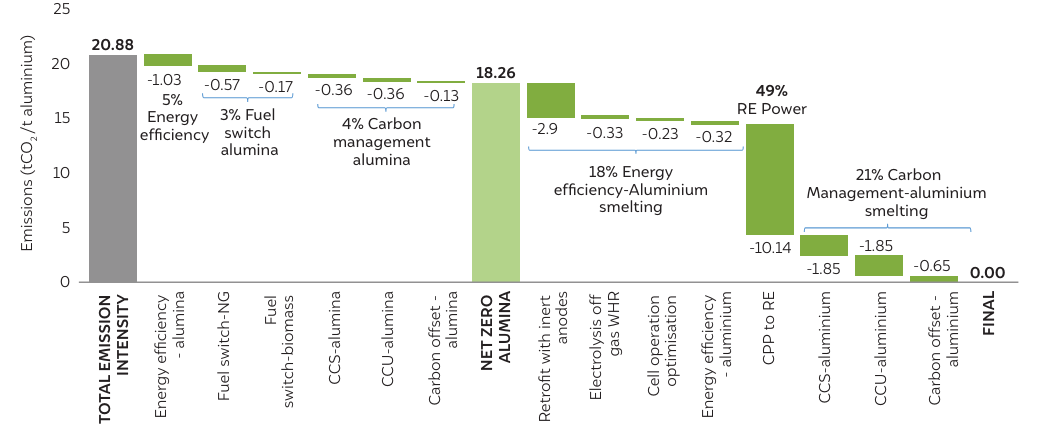

A study by the Council on Energy, Environment, and Water (CEEW) suggests that India's aluminium sector requires an additional investment of roughly $29 billion (INR 2.2 lakh crore) in capital expenditure (CAPEX) to attain net-zero carbon emissions. The research underscores that renewable energy (RE) has the potential to reduce 49 per cent of the industry's emissions. However, the study notes that depending entirely on RE poses challenges due to its intermittent availability.
_Logo_0_0.jpg)
In the fiscal year 2019-20, the Indian aluminium industry, integral to both the power sector and economy, discharged 77 million tonnes of CO2. Predominantly, 80 per cent of these emissions stemmed from electricity usage. A research project reveals that transitioning to a net-zero emissions aluminium industry would entail a 61 per cent cost increase, amounting to an additional INR 26,049 crore in annual operating expenses (OPEX).
The Council on Energy, Environment and Water, commonly known as CEEW, is a Not-For profit Think Tank and policy institution based in New Delhi, India. CEEW was formed to provide independent research-based insights to policymakers for building a sustainable India.
CEEW's study provides a Marginal Abatement Cost (MAC) curve, delineating technologies capable of facilitating industry decarbonisation alongside their respective costs.
To meet India's climate goals, Hemant Mallya, CEEW Fellow, stressed the importance of capital investment and scaling up from different sectors.
"Aluminium and fertiliser industries require substantial government support to develop the necessary infrastructure, including power grids and pipelines," Mallya said.
Emission mitigation pathway for alumina refining and aluminium smelting

Source: CEEW
The research highlights that implementing energy efficiency strategies in alumina refining, aluminium smelting, and waste heat recovery can reduce emissions by 8 per cent without incurring additional costs. Additionally, advancing decarbonisation efforts such as renewable energy adoption and carbon capture demonstrate a positive marginal abatement cost (MAC). This suggests that facilities adopting these solutions may experience a net financial benefit.
Deepak Yadav, the Programme Lead at CEEW, emphasised the crucial need to provide incentives for renewable energy adoption, especially in eastern regions with limited wind power potential. Additionally, he highlighted the necessity of fostering a robust research and development framework to gather data on decarbonisation initiatives. He advocated for implementing supportive policies to establish an ecosystem for carbon capture, utilisation, and storage (CCUS).
The research delves into the hurdles of decarbonising India's fertiliser industry, which emits around 25 million tonnes of CO2 yearly due to its energy-intensive methods and reliance on fossil fuels. While shifting to renewable energy sources would only bring about a 2 per cent decrease in emissions, adopting green ammonia production could slash emissions by 151 per cent, achieving net-negative emissions. The study also explores other carbon management strategies like CCS, CCU, and afforestation.
Gain deeper insights into sustainability efforts within the aluminium industry and explore the strategies employed by global leaders to decarbonise their operations by delving into AL Circle's specialised report titled "Sustainability in the Global Aluminium Industry."



Responses






